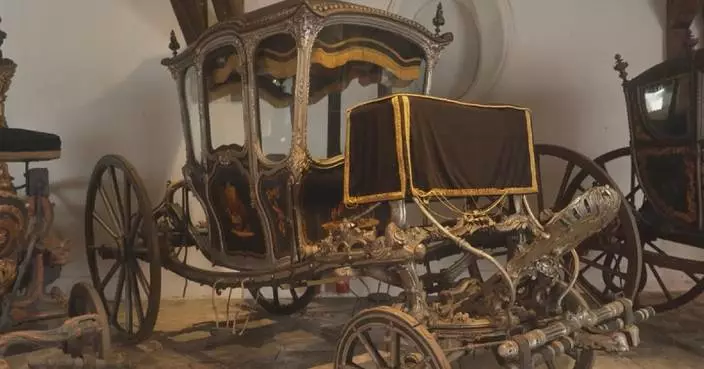The May Day holiday from May 1 to 5 has witnessed an inbound travel frenzy in China as foreign visitors are flocking to popular tourist attractions to immerse themselves in the beauty of nature.
The Mujiayu Airport in Beijing's Miyun District launched a service, enabling tourists to have a bird's view of several sections of the Great Wall.
"You can travel to see the Great Wall and many different locations. But you cannot see it from this angle and from this perspective. It makes it really special," said a U.S. tourist.
"I am still trying to get my breath out of this excitement. It's definitely worth it. You should go give it a try. I brought my GoPro, my phone, and I was taking videos of all the things I could see. But still, it's felt like it's just not enough, because my eyes, I was capturing all that in real time, but also I was trying to keep as much memory as I can on my phone," said another U.S. tourist.
"We have recently opened up two routes. One allows visitors to have a glimpse of the Juyongguan section of the Great Wall, and the other offers visitors the bird's eye view of the Simatai section and the Jinshanling section of the Great Wall. In fact, people cannot really see the wonderful view of these sections since they are largely undeveloped over the years and unaccessible," said Xu Changzheng, a pilot coach at Reignwood Aviation.
In Enshi, an autonomous prefecture in central China's Hubei Province, a group of foreign visitors took a wooden ferry to sail in an entrenched river while chanting along with the tour guide.
"Maybe I come to China about 20 times. The nature is very beautiful," said a tourist from Germany.

Breath-taking sceneries draw foreign visitors to China during May Day holiday
Ghana's Cape Coast Castle Museum, housed in one of the wings of Cape Coast Castle, commemorates centuries of the slave trade on the African continent.
Cape Coast Castle, located on the rocky coast of the Eastern Atlantic, is the most prominent of the 30 or so "slave castles" in the West African country. It served as an important trading port in the infamous transatlantic slave trade between Europe, Africa and the Americas before Ghana became independent.
In 1974, the government of Ghana converted the castle into a historical museum, and in 1979, Cape Coast Castle was inscribed on the UNESCO World Heritage List, along with other colonial castles in Ghana.
In the corners of the castle are sealed, dank dungeons known to the colonists as "slave caves," where Africans were confined before being forced onto slave ships bound for the Americas. There are about a dozen narrow dungeons in the castle, which are divided into "men's cells" and "women's cells," with each holding between 100 and 200 people, and having only enough space for the people to stand or sit close together and small skylights for ventilation. Very limited food and water were supplied there.
The castle once held over 1,000 Africans at a time while the colonists waited for the right monsoon to sail. The museum's narrator said the physical and mental torture of the internees sometimes lasted months, and many died of starvation and disease before boarding the slave ships.
By comparison, the occupants of the administrative offices above lived in relatively luxurious, large and bright rooms.
Through the renowned "Door of No Return" at the end of the castle, the enslaved Africans ended their last time in their homeland and began their one-way journey to be shipped across the ocean.
During the Atlantic slave trade from the 16th to the 19th century, a total of 10 to 12 million enslaved Africans were transported across the Atlantic Ocean to the Americas, fueling global trade and the rapid accumulation of capital and leaving devastating effects in Africa, including the loss of young and able-bodied labor, drastic population reduction, disruption of production technology and tribal conflicts, escalation of violence, and decline of civilization.

Ghana's castle-based museum commemorates slavery history










